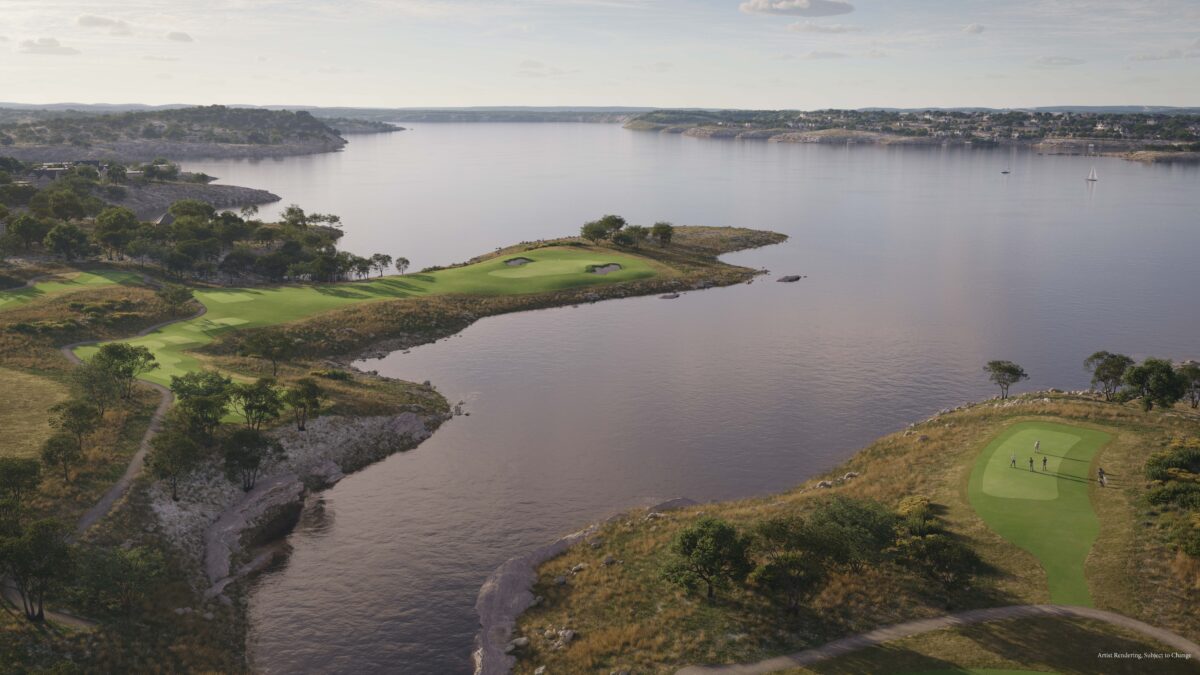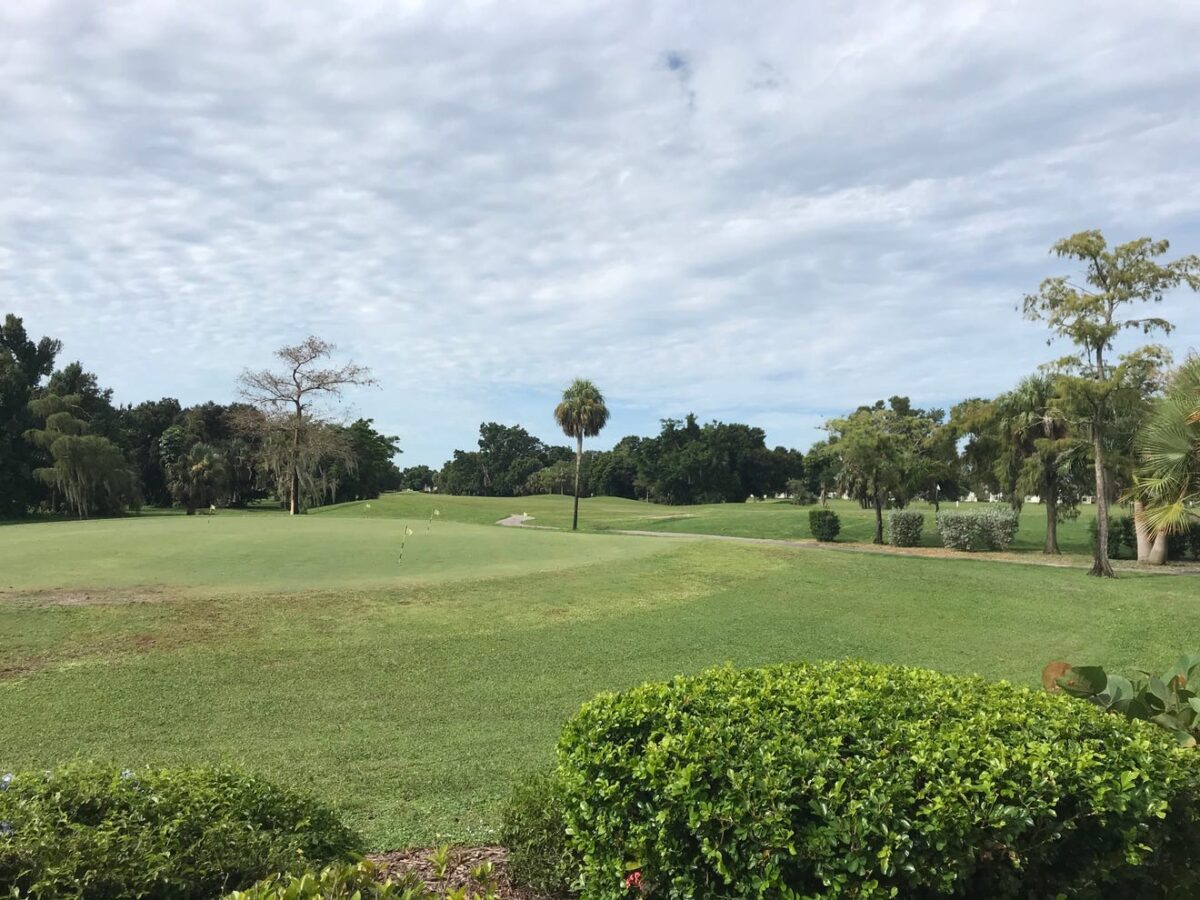(Editor’s note: Bandon Dunes Golf Resort is celebrating its 25th anniversary and Golfweek Travel Editor Jason Lusk put together a comprehensive package for the occasion, complete with Q&As of pivotal people in and around the operation. To see the entire package of stories, click here.)
BANDON, Ore. – Ken Nice grew up in Corvallis, Oregon, and he wasn’t a golfer. Basketball was his game, and it’s still one of his passions as a coach at the high school in Bandon.
Nice took up golf after college, and with his interest piqued, he has gone on to become one of the leading voices of golf agronomy in the world since starting at Bandon Dunes Golf Resort as an assistant before it opened in 1999, then overseeing the grow-in of the other courses. He is now the senior director of agronomy at Bandon Dunes Golf Resort.
He spoke with Golfweek in the run-up to the resort’s 25th anniversary.
When you started at Bandon, what was the environment like?
March of ’99. Even for me at the time, it seemed big. The previous courses I had worked at were Trysting Tree in Corvallis and then Astoria Golf and Country Club. So we had a full-time staff of about eight or nine at Astoria. I came here and all of a sudden there were like 30 guys and a brand-new maintenance facility, a brand-new golf course in Bandon Dunes with big scale compared to a lot of what I has seen up to that point. Initially I was just blown away by the place.
What’s interesting, 10 months later we got the fire at (the yet unbuilt) Pacific Dunes that wiped out all the gorse (which is extremely flammable and is a threat along much of the coast around Bandon). Tom Doak was able to envision the routing much better because the contours were now exposed. Up to that point it was just a sea of gorse, so you had to completely rely on topo maps. So Doak comes out and really refines his routing, and then all the sudden Mr. Keiser said the Renaissance guys (the company Doak founded) and Tom, they’re not doing anything this winter so they thought they’d just build some holes. We built 11 holes by June. It was a blur.
And I was never given the actual construction superintendent job, for a while. I just acted like I had it. At some point they were just like, “Well, he’s been doing it, so …” I actually owe Tom Doak a lot because he was probably the first person to really champion my cause and my efforts.
You got to work with Tom Doak again at Old Mac. That must have been like a familiar handshake.
Getting to work with Tom for the second time, and also Jim Urbina – Jim was kind of the on-site designer at Pacific, too, ran the construction – I have learned so much from Tom. I could never do what Tom does. When you get to work with Tom or Bill Coore or David McLay Kidd, these guys put together these amazing routings.
Just to be a fly on the wall with Tom, going through the process twice with him and also the Punchbowl (putting course), I have learned a ton from him about what’s right and what’s wrong. Aesthetically, I think a lot of time we all know what looks good and what doesn’t, but how do you create that?
Working on a links-type golf course must have been a different experience for you, all the way to the roots of the turf?
It’s kind of interesting that what got me into golf, my passion, was watching (British) Open Championships. So I saw these kinds of burnt-out, brownish, fast-playing and kind of raw and rugged golf courses, and that was what motivated me. That was my inspiration to get into golf.
One of my first jobs out of Oregon State was at Astoria Golf and Country Club, and it’s on the North Coast. It’s a sandy, ocean course – not right on the ocean, but it’s very old-school. If you were to go look at it, you would say the contours are amazing and very cool. So I actually sought out the most links-like experience to start my career, and it was Astoria.

What’s it been like working for Mike Keiser all these years as he tries to build a Dornoch of the United States? How do you go about it?
First, I can’t really even say how thankful and how much gratitude I have toward the opportunity to work with him. The relationship, like all relationships, builds over time – you have to prove yourself. He’s always understated with his comments. It’s not like he’s overly effusive, but certain comments mean a ton, you know.
For me, the biggest comment he ever made to me that probably changed our relationship but also let me know how he felt about me, was when I left Pacific Dunes and went to Bandon Trails. At the time, Pacific Dunes was dialed in, it was amazing and I could have just lived out a career as the superintendent at Pacific Dunes.
But then I had the opportunity to go work with Bill Coore and Ben Crenshaw, and build Trails with them and do the grow-in there. Mike Keiser and I were driving around the jobsite, and he said he respected the move that I made to come over to Trails, and that I could have rested on my laurels but I took a chance. He said that “was a strong move, a confident move and the right move.”
That statement to me kind of let me know I was on the right path with him in terms of his confidence. After that he’s trusted me to lead the projects here forward. … That’s a huge honor for me and something I don’t take lightly.
Speaking of taking a risk, 25 years ago nobody was building a resort like this. The whole place is a risk. How does all that stack up in building what Bandon is today?
Because I have been here all this time and been a part of every change that has occurred, it’s probably not as impactful to me. I’ve always said: You know the movie “Men in Black,” they have that thing that erases your memory? It would be pretty cool to come here for a first time again. Somebody zappy-thing me, then I come to Bandon Dunes for a week. That would be great.
It’s a different place entirely. I never envisioned it being this massive, this many courses. When you start on a project, how many times have you been in a golf development where you see the first one but they’re talking four or five more courses and tennis courts, you know? And then something peters out and momentum stops and it never really comes to fruition.
Whereas Bandon Dunes has always been like, Mr. Keiser is just like, “We’re starting the construction on this,” and boom, next thing we’re going. That kind of pace, of being able to continue to work and have opportunities to develop some of these courses with such a great group of designers and teams that we’ve actually had come through here – I’m thankful every day for this job.
What surprises your guests the most about these links?
Our clients are so varied, you have some men and women come here that know what links golf is all about. And that’s their deal, so they’re all in.
But then there’s some that are shocked, you know. We get the comment about no grass on the fairways, the lies are too tight, you know? It depends on perception. If somebody’s coming from Florida thinking that, you know, they’re going to have similar conditions to what they’re used to, it’s kind of a shock to them. Adapting to a new style of golf is tough in a crash course kind of situation.
In town, are you known as the golf guy or the basketball coach?
Well, I’m certainly thankful to have been able to coach for 22 years at Bandon High. That’s another whole side of the deal in terms of being thankful. That’s a lot of kids and family connections in the town that are meaningful, being integrated in the town.
It’s probably 50-50. Some of them probably don’t know what I do out here. I would like to say, the Keiser family has always been hugely supportive of my coaching and being part of the community and having involvement. You know, being a Bandon guy.














